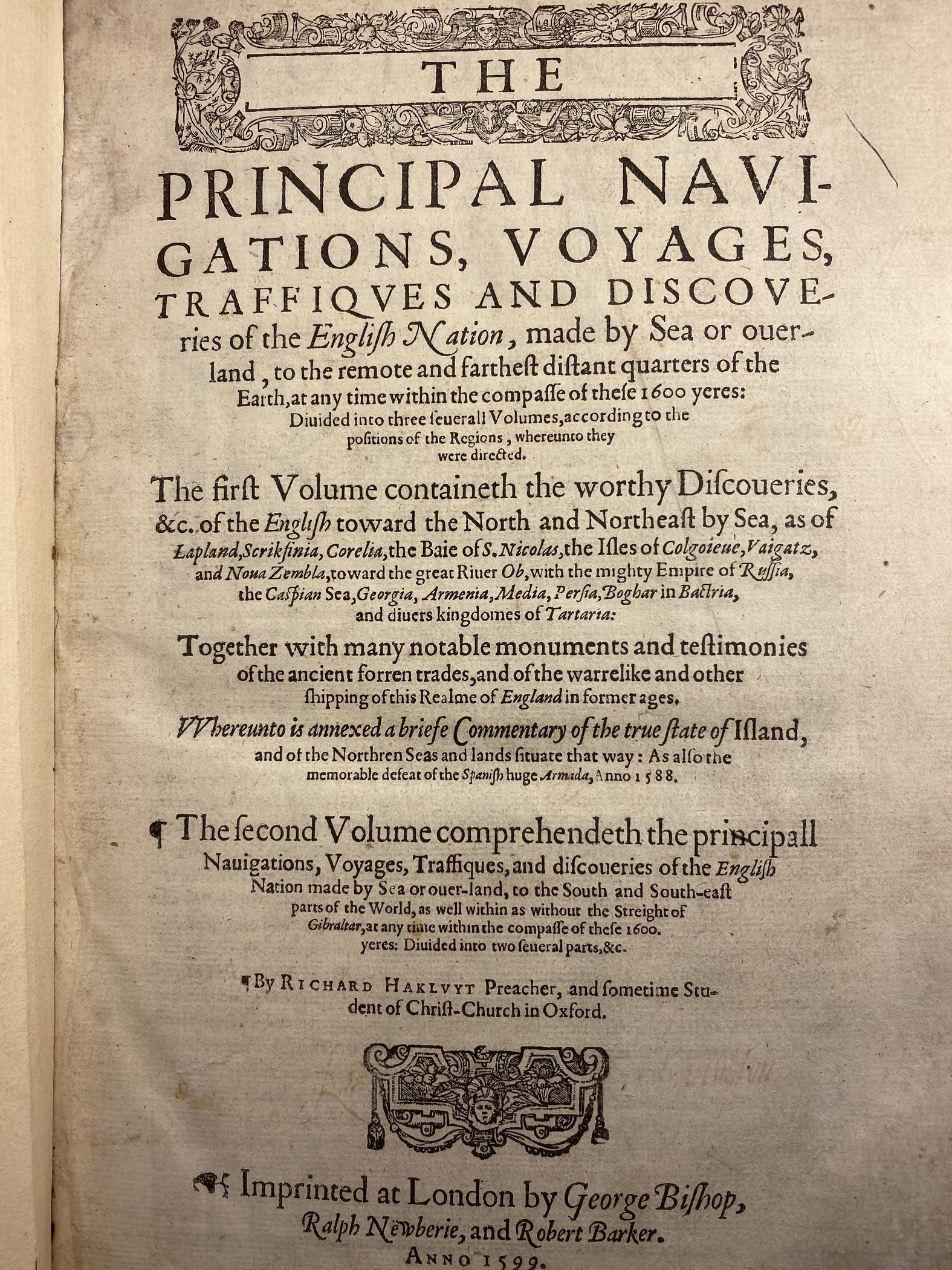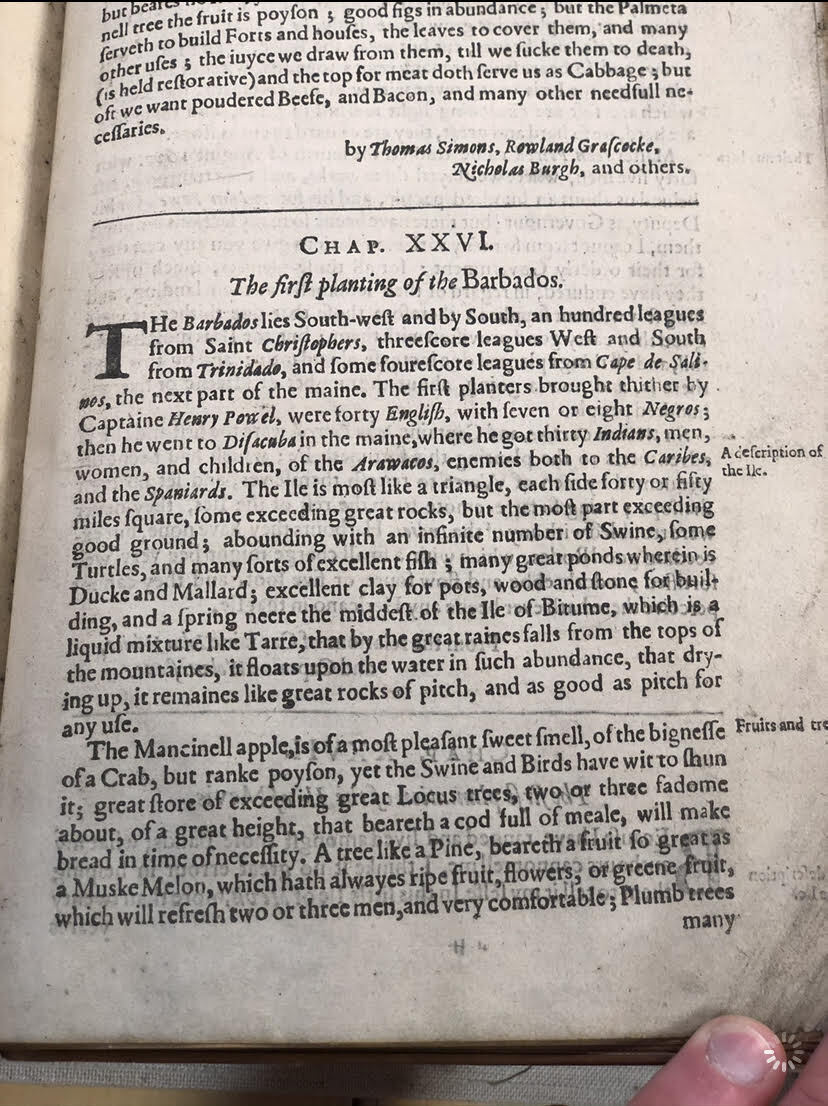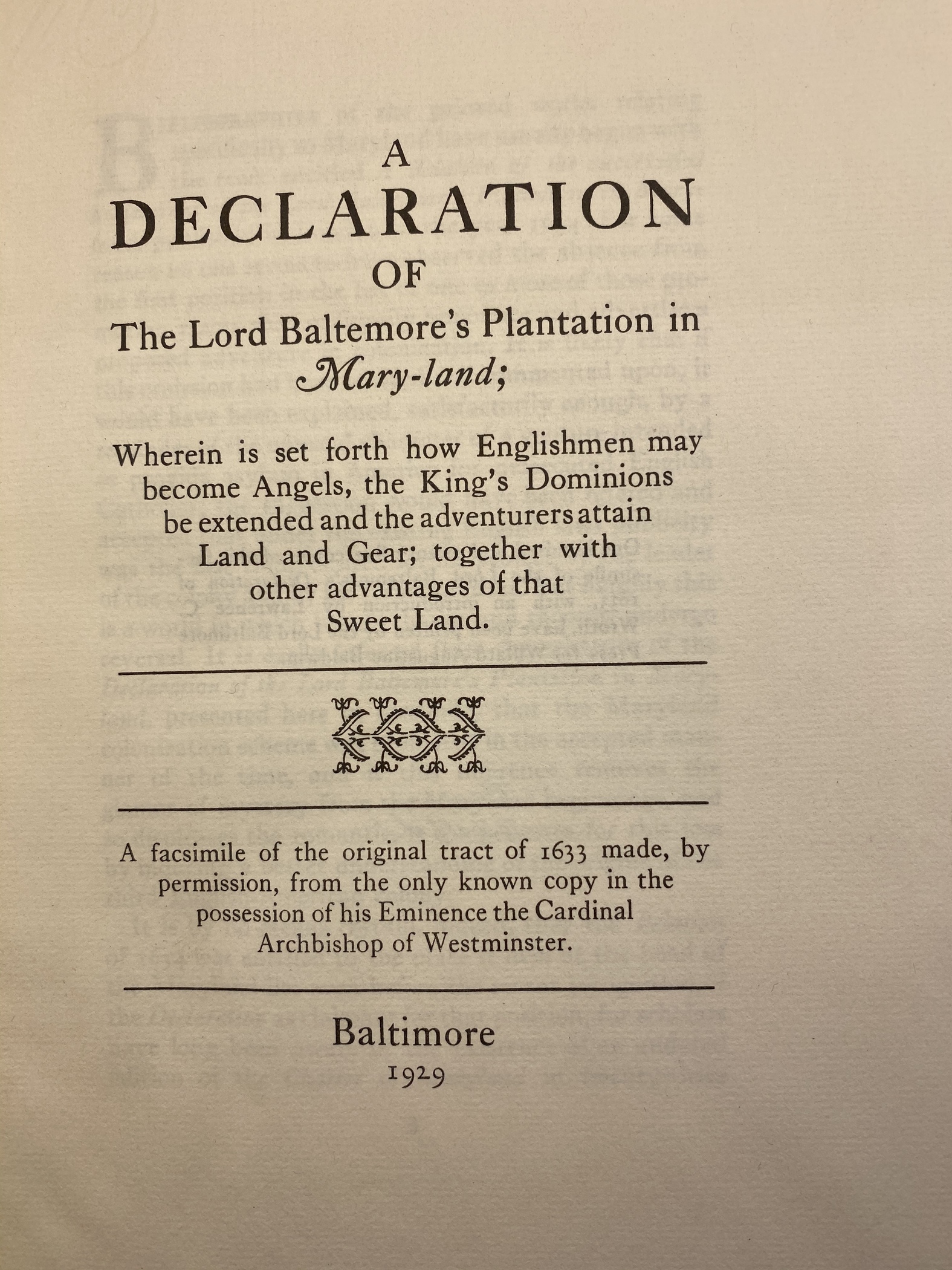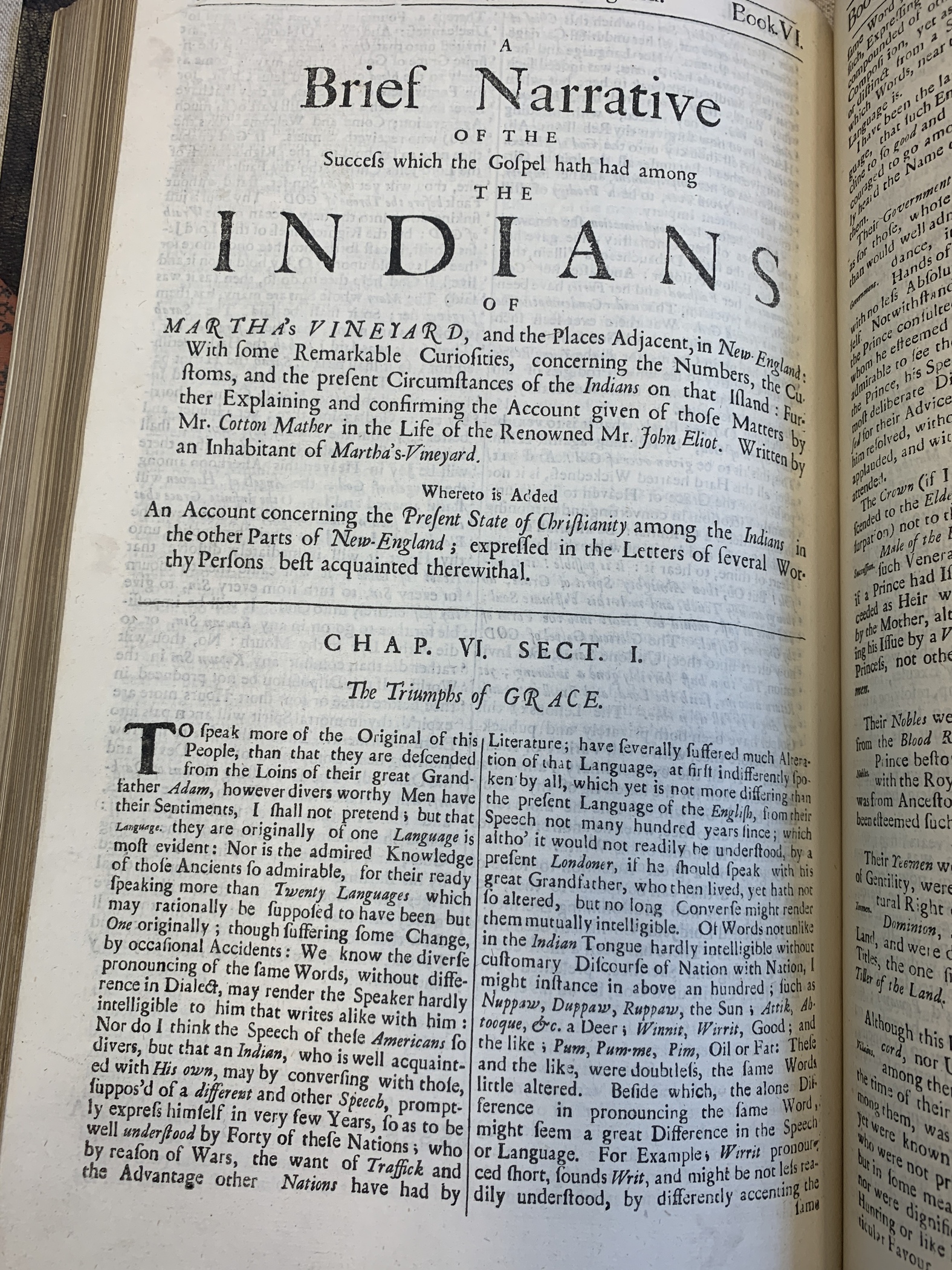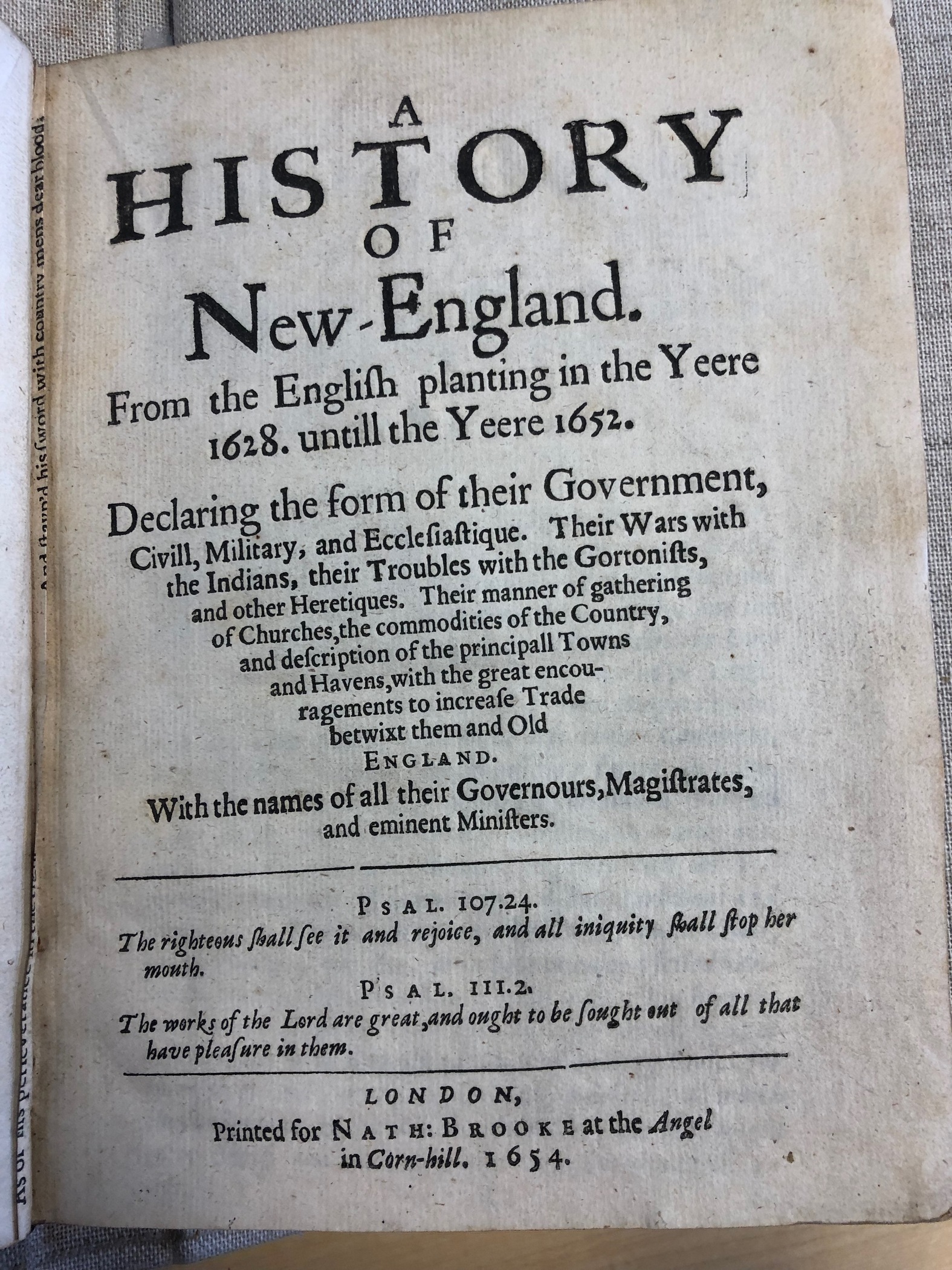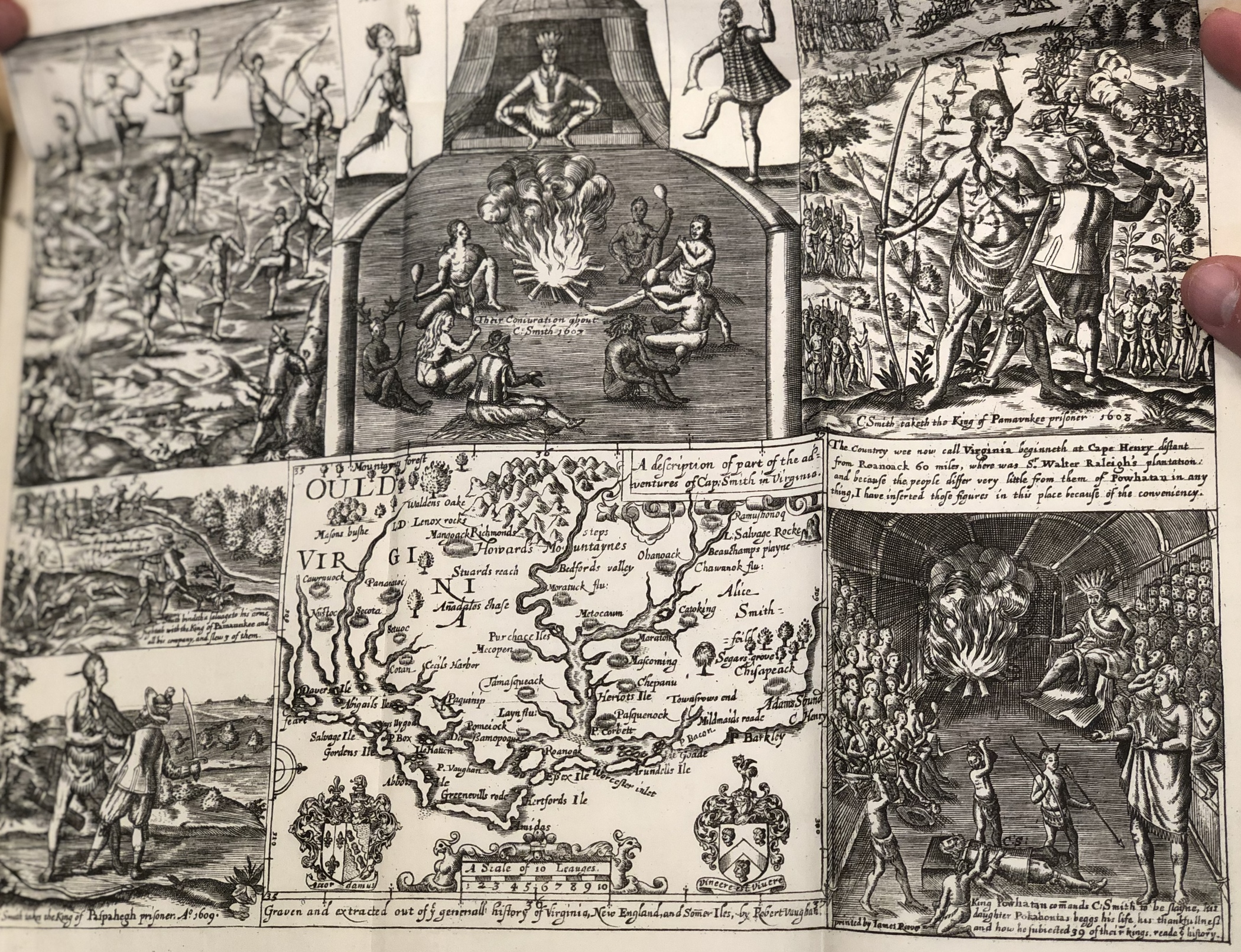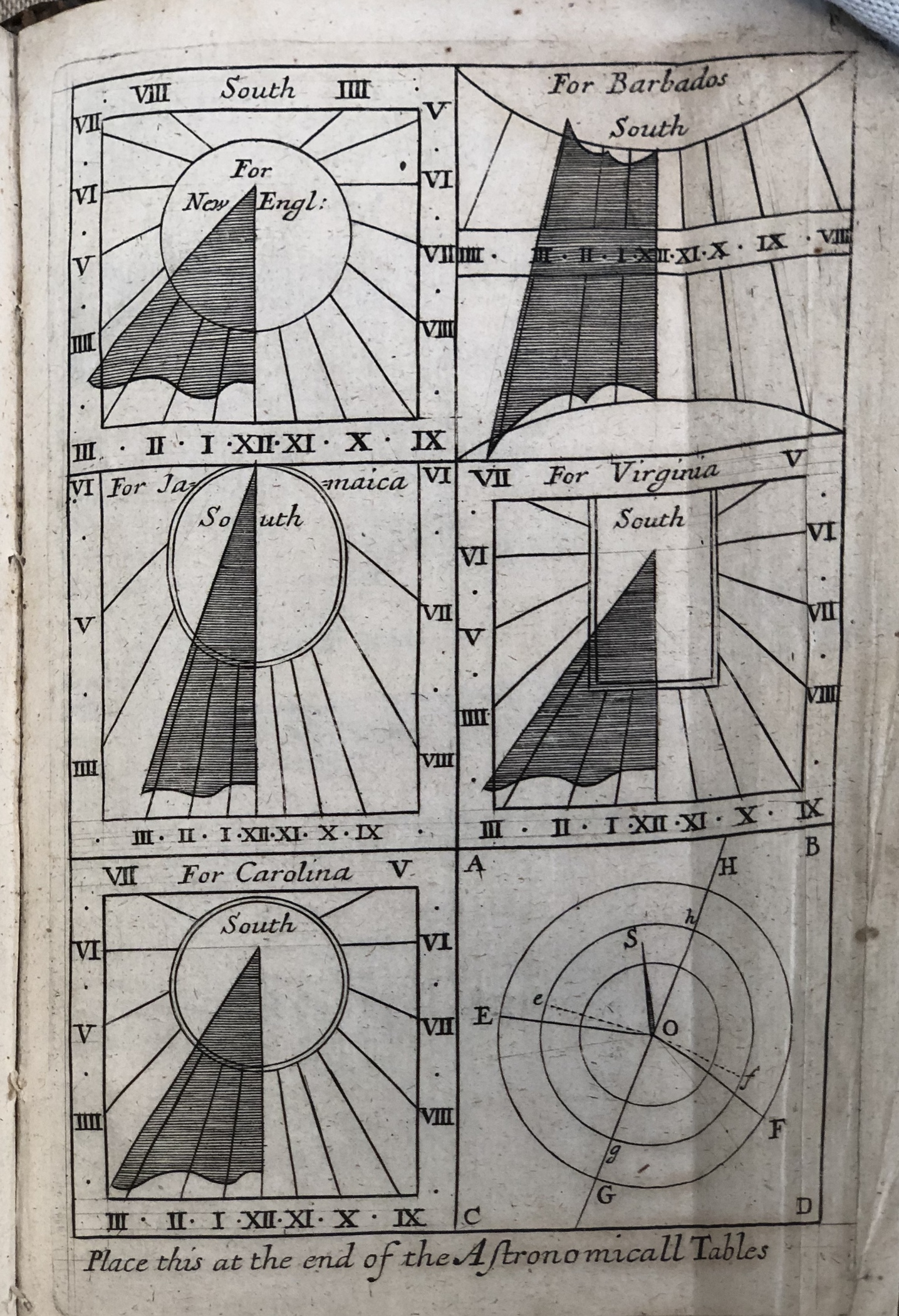Miscellaneous
"The Principal Navigations...": In the early 1600s, Richard Hakluyt was an ardent proponent of growing and cementing Britain’s role in the international trade of goods, specifically in the Americas and Asia. More specially, Hakluyt was interested in trade as a sort of proxy war against the Catholic Spanish, who had already claimed a substantial part of the American trade routes for themselves. In this respect, Hakluyt viewed trade as a religious, commercial, and political venture. He believed that if Britain engaged in international trade with due haste, it would be financially and ecclesiastically destructive for the Spanish while elevating England’s standing on the international stage. For this purpose, Hakluyt’s three–volume set of The Principal Navigations collated and presented the findings of English voyages to the Americas, eastern Europe, and Asia in an effort to encourage England’s participation in the wor
HTML
Block to be removed
ld trade and assist in its successful fruition. Hakluyt saw particular commercial advantages in colonizing the eastern coast of North America due its abundance of natural commodities and temperate climate. (Dugar)
Further reading: Hakluyt, Discourse of Western Planting (1584)
In 1632, George Calvert, the first Lord Baltimore, obtained a charter to settle Maryland with the vision of establishing a haven for Catholics – and any other religious groups – who were ardently loyal to the King. However, Baltimore’s focus was not on religion here; in fact, in his 1633 instructions to the region’s colonists, he expressly forbade the discussion of Catholicism in the presence of Protestants to further emphasize that despite their religion, these Catholics maintained complete loyalty to England and the King, not the Roman papacy. Therefore, the natural commodities and potential commercial ventures listed in this document were to be used in service of extending the “king’s dominion,” or contributing to England’s trade and overall wealth and legitimacy on the global scale. For these reasons, Maryland’s formation and growth represented a fundamental question for the nature of communities and empire: is it law, monarchy, economic interests, or religion that binds a group together? (Dugar)
Further reading: “Instructions to the Colonists by Lord Baltimore” (1633)
The document A History of New England which was written by Edward Johnson depicts many pieces of history regarding New England from 1628-1652. This book explores everything from the declared form of government to the push to increase trade between the colonies and England. This is significant because it demonstrates the importance of the factors that shaped New England. Many of the events, and components depicted in this book help to tell the tale of what made New England unique. The wars, forms of government, contacts with Indigineous peoples, and desire to increase trade all add to the formation of New England as an independent place. These are the events that helped to create a special identity that defined New England. (Brillante)
Conclusion:
The items contained in this page provide both subjective and objective historical accounts of the new world and it's people, colonization, exploration, and the founding of new societies. This page provides a variety of opportunity to explore and relive the excitement of the new world in the 17th century. The items comprise the histories of Europe's new world colonies and settlers, ranging from New England and Rhode Island, to Maryland and Virginia, to the Caribbean.
Despite the title, the hodgepodge of items presented on this page also conform to a coherent and structured theme like those of the other pages. The items all describe people going through similar situations of exploring, colonizing, and establishing societies at different points in time, in different geographical locations. The first item of the page by Hakluyt provides secondary accounts of the new world and attempts to paint a picture of what English colonization might look like and its benefits. Later items such as Johnson and Poole's "A History of New England," Lord Baltimore's declaration of Maryland, and Slater's chapter on "The First Planting of the Barbados" all bring Haklyut's vision of English colonization to life in many different areas. Yet, many of these items that identify under England as pioneers of colonization, have very different experiences and visions for their respective societies. The people of New England and Rhode Island center their societies around religious motives; meanwhile, colonies such as Virginia and the Barbados are more economically driven. Alternatively, some items describe the lifestyle and challenges that pirates face, despite not having a permanent residence.
Each item ultimately explores the question of purpose and identity. While the response to this central question of purpose may vary from item to item, each item provides a valuable history on the goals, challenges, and lifestyles of an early 17th century English colony.
